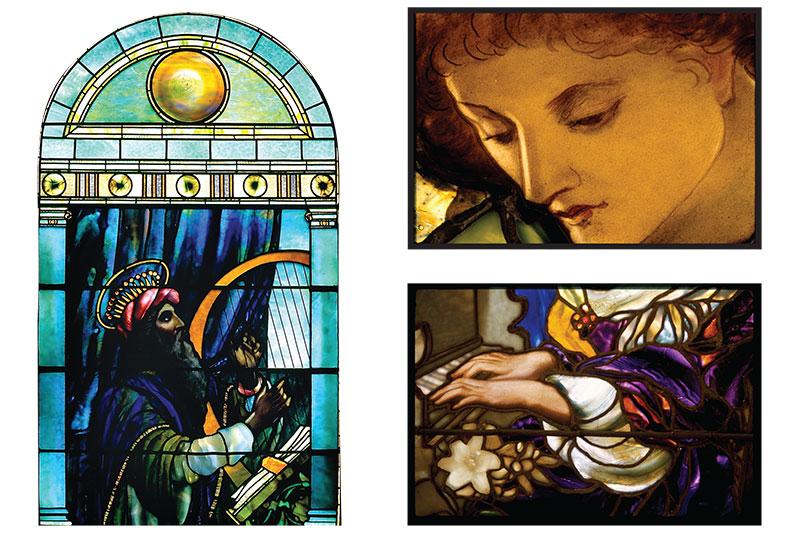Tiffany windows are Tulane treasure
The uptown campus of Tulane University is home to several one-of-a-kind stained-glass windows designed by renowned stained-glass artist Louis Comfort Tiffany (1848–1933).
Newcomb College founder Josephine Louise Newcomb and members of her family made Tiffany window commissions between 1894 and 1896 for a chapel at the original site of Newcomb College on Washington Avenue in New Orleans.
One of those commissions was for Resurrection (detail, below, top right). It is part of a triptych that was designed in memory of Mrs. Newcomb’s daughter, Harriott Sophie Newcomb, for whom Newcomb College was named. Originally installed behind the altar of the original chapel, Resurrection was removed and placed in storage along with several other Tiffany windows when the college relocated to the Tulane Broadway campus in 1918.
“The Tiffany windows are the most important works in our museum collection, and they underscore that our institution is built upon the visual arts legacy of Newcomb College and the Arts and Crafts movement of the late 1800s.”
Mónica Ramírez-Montagut, director of the Newcomb Art Museum
Uncrated and then installed in the Myra Clare Rogers Memorial Chapel when it was built in 1976, the King David (below, left) and St. Cecilia (detail, below, bottom right) windows had been commissioned as memorials to Mrs. Newcomb’s husband, Warren, and her mother, Mary Sophie LeMonnier.
Resurrection remained in storage until the mid-1990s when stained-glass expert Art Femenella restored the triptych at his studio in Annandale, New Jersey.
Once restored, Resurrection was installed in Woodward Way during the 1996 construction of the Woldenberg Art Center. Woodward Way is the enclosed breezeway at the entrance of the Newcomb Art Museum.
“The Tiffany windows are the most important works in our museum collection, and they underscore that our institution is built upon the visual arts legacy of Newcomb College and the Arts and Crafts movement of the late 1800s,” says Mónica Ramírez-Montagut, director of the Newcomb Art Museum. “Just as Mrs. Newcomb paid tribute to her daughter in commissioning these art windows, the museum honors the college in their prominent installation at the entrance of our museum.”
Ramírez-Montagut says immediately upon entry to the museum, visitors should know that the institution is based upon a rich cultural foundation inspired by the integration of the arts into everyday life and the advancement of women's education.
“Historically Tiffany art and Newcomb Pottery were shown together,” she says. “They were perfect companions and continue to accompany each other in a truly unique manner here at the Newcomb Art Museum.”

